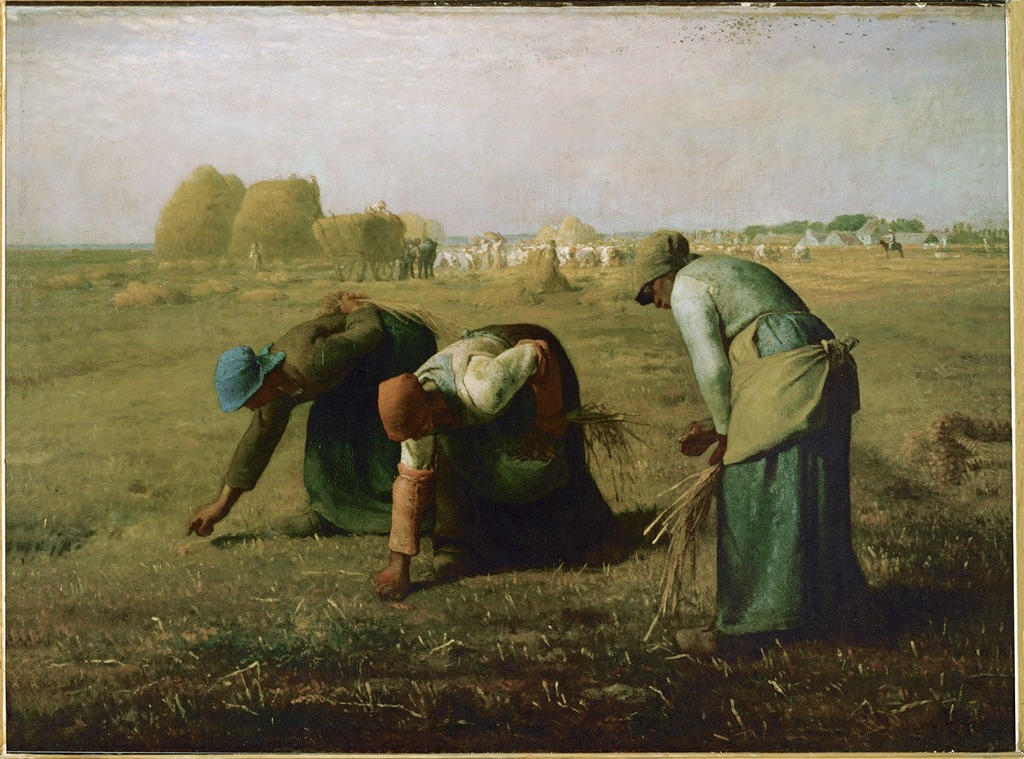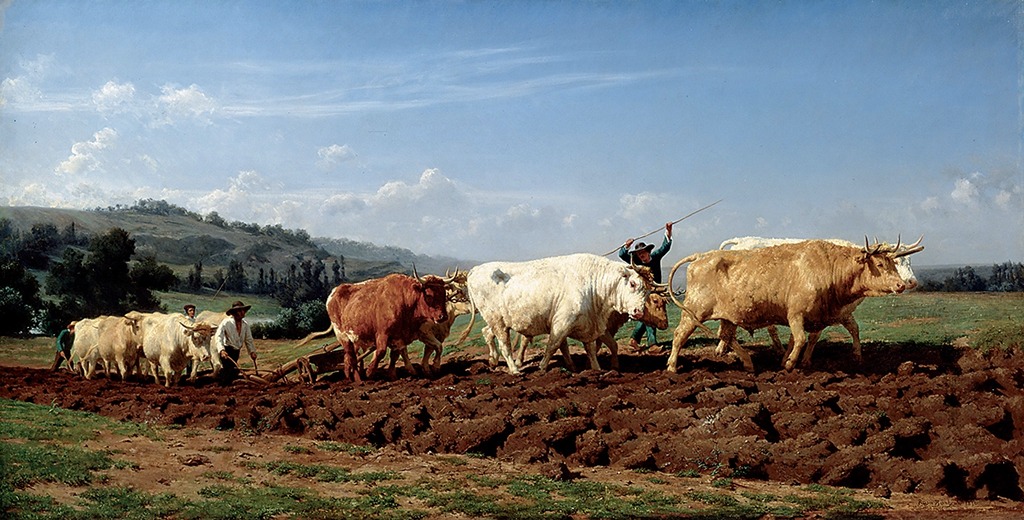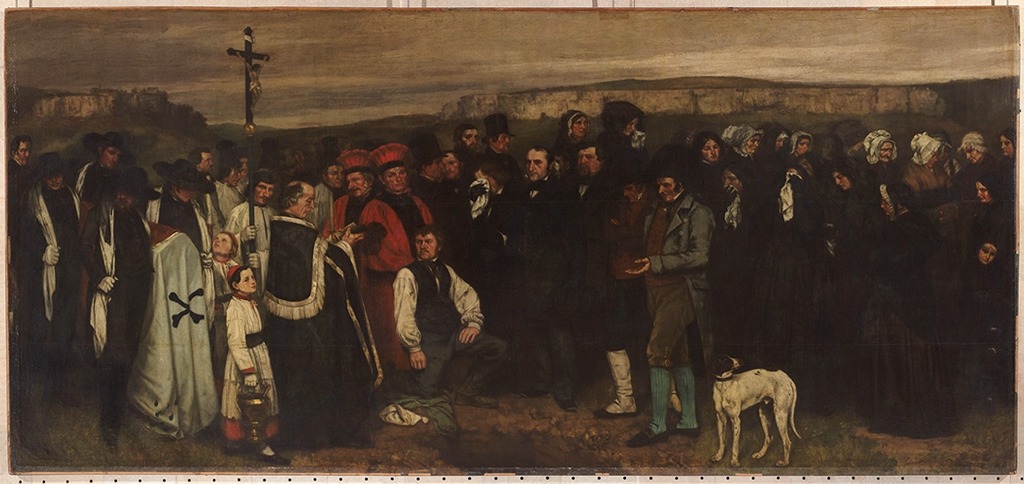Chapter 11.5: Realism, 1845-1900
Realism is an attempt to represent figures and objects exactly as they appear in life. Realists believe that artists should only represent that which they have witnessed firsthand. Some of the Artists involved: Gustave Flaubert, Guy de Maupassant, Anton Chekhov, George Eliot, Mark Twain, Henry James, Thomas Eakins, Jean Francois Millet.
The Royal Academy supported the age-old belief that art should be instructive, morally uplifting, refined, inspired by the classical tradition, a good reflection of the national culture, and, above all, about beauty. But trying to keep young nineteenth-century artists’ eyes on the past became an issue! The world was changing rapidly, and some artists wanted their work to be about their contemporary environment—about themselves and their own perceptions of life. In short, they believed that the modern era deserved to have a modern art.
The Modern Era begins with the Industrial Revolution in the late eighteenth century. Clothing, food, heat, light, and sanitation are a few of the basic areas that “modernized” the nineteenth century. Transportation was faster, getting things done got easier, shopping in the new department stores became an adventure, and people developed a sense of “leisure time”—thus, the entertainment businesses grew.


Paris Transformed
In Paris, the city was transformed from a medieval warren of streets to a grand urban center with wide boulevards, parks, shopping districts, and multi-class dwellings (so that the division of class might be from floor to floor—the rich on the lower floors and the poor on the upper floors in one building—instead by neighborhood). Therefore, modern life was about social mixing, social mobility, frequent journeys from the city to the country and back, and a generally faster pace that has accelerated ever since.
How could paintings and sculptures about classical gods and biblical stories relate to a population enchanted with this progress?
In the middle of the nineteenth century, the young artists decided that it couldn’t and shouldn’t. In 1863 the poet and art critic Charles Baudelaire published an essay entitled “The Painter of Modern Life,” which declared that the artist must be of his/her own time.

Video

Courbet, A Burial at Ornans, 1849-50 (5:46)
Media Attributions
- Figure 1. Gustave Courbet, Les Demoiselles du bord de la Seine (Young Ladies on the Banks of the Seine) 1856, oil on canvas. (Musée du Petit Palais, Paris, France; Image source: The Yorck Project, via Wikimedia Commons, licensed under the GNU Free Documentation License).
- Figure 2. Jean Francois Millet, The Gleaners, 1857, oil on canvas. Musée d’Orsay (Image source: Erich Lessing/ART RESOURCE, N.Y. via ArtStor. Used with permission. For educational use only)
- Figure 3. Rosa Bonheur, Plowing in Nivernais, 1850, oil on canvas (Image source: The John and Mable Ringling Museum of Art, the State Art Museum of Florida, a division of Florida State University via ArtStor. Used with permission. For educational use only).
- Figure 4. Gustave Courbet, A Burial at Ornans, 1849-1850, oil on canvas. (Musée d’Orsay, Paris, France; Images source: Photographer: Gérard Blot / Hervé Lewandowski, Réunion des Musées Nationaux / Art Resource, N.Y. Photographer: Gérard Blot / Hervé Lewandowski, via ArtStor. Used with permission. For educational purposes only)
Candela Citations
- A beginner's guide to Realism. Authored by: Dr. Beth Gersh-Nesic. Provided by: Smarthistory. Retrieved from: https://smarthistory.org/a-beginners-guide-to-realism/. License: CC BY-NC-SA: Attribution-NonCommercial-ShareAlike
- Gustave Courbet, A Burial at Ornans. Authored by: Dr. Beth Harris and Dr. Steven Zucker. Provided by: Smarthistory. Retrieved from: https://smarthistory.org/gustave-courbet-a-burial-at-ornans/. License: CC BY-NC-SA: Attribution-NonCommercial-ShareAlike

